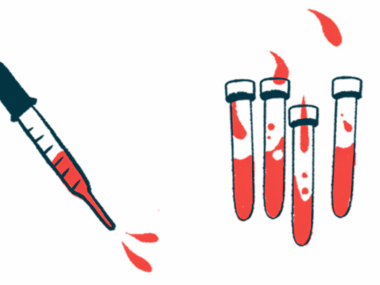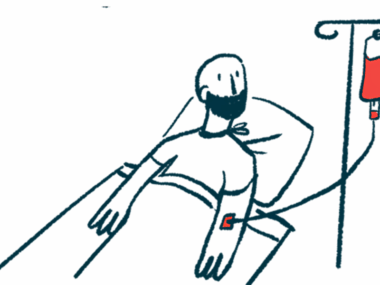The miracles of science, and a hamster that helped me breathe
The same persistence that conquered polio is reshaping rare disease treatment
Written by |

Note: This column describes the author’s own experiences with Ultomiris (ravulizumab-cwvz). Not everyone will have the same response to treatment. Consult your doctor before starting or stopping a therapy.
When I was 8 years old, I spent two years going in and out of Boston Children’s Hospital. During those years, I had a brain tumor removed, followed by surgery to reconstruct the right side of my skull. The tumor and the surgeries were painful, but I can’t say they caused me much fear. Perhaps they were too esoteric and beyond the understanding of someone my age.
However, from the moment I first saw an iron lung used to treat polio patients, it scared the daylights out of me. The thought of being trapped in such a spooky-looking contraption caused me to look away whenever I saw one. My parents and doctors explained how the device saved lives, but I refused to acknowledge that, and the fear never left me. What did eventually leave were polio and the fear it caused, thanks to the development of the polio vaccine.
U.S. virologist Jonas Salk led the research that resulted in a successful vaccine. When he began testing it in the early 1950s, many thought he was chasing the impossible. Salk possessed medical brilliance coupled with determination that sustained him through repeated failures. While others couldn’t see the possibilities, he could. When his vaccine was eventually declared safe and effective in 1955, church bells rang across the United States.
The future knocking
Living with myasthenia gravis (MG), I often think about the patience and perseverance behind medical breakthroughs like that one. MG can weaken the muscles that control speech, swallowing, and breathing. It’s unpredictable and can turn simple acts like eating or talking into a struggle for air.
For years, I tried different medications, hoping something would finally bring me some balance. Nothing worked, and fear was followed by depression. Then came Ultomiris (ravulizumab-cwvz), an infusion I receive every eight weeks, and with it, a measure of peace I’d nearly forgotten about.
Ultomiris works by blocking a component of the immune system known as the C5 complement protein. In patients with MG, self-reactive antibodies mistakenly attack the neuromuscular junction, which is the connection between nerves and muscles. The blockage prevents messages from reaching muscles, resulting in dysphagia (difficulty swallowing), ptosis (eyelid droopiness), dysarthria (difficulty speaking), and dyspnea (difficulty breathing).
The brilliance behind this therapy borders on the unbelievable. The drug is produced using genetically engineered Chinese hamster ovary cells, which can generate humanized monoclonal antibodies. In turn, the assault on the immune process is halted. It still amazes me that something born in the tiny cells of a hamster could restore my ability to breathe, swallow, and live without constant fear.
When I sat through my Ultomiris infusion today, I felt incredible gratitude. Since starting my treatment, I have more energy, I sleep better, my breathing is steadier, and those terrifying choking spells have become so infrequent that I forget their threat.
In addition to physical relief, Ultomiris brings me emotional and psychological relief. MG undermines confidence and independence. My infusions restored these. Ultomiris isn’t a cure, but rather a lifeline. Each day, I silently thank the scientists who made it possible, and I pray the Lord will bless and keep them, that he will make his face shine unto them and be gracious to them, and that he will lift up his countenance upon them and give them peace.
The horizon is widening again, with hope for an eventual targeted gene therapy for MG. This approach aims not to block immune misfires, but rather to correct the genetic mechanisms that cause them. Scientists are also experimenting with gene silencing therapies that could retrain the immune system itself. For those of us living with MG, that’s not science fiction. It’s the future knocking softly at the lab door.
Finding the right treatment for MG often takes years. It can involve frustrating trial and error with a combination of steroids, immunosuppressants, intravenous immunoglobulin therapy, or plasmapheresis before anything seems to help. I’ve been through those years of waiting, watching my world shrink, and wondering if I’d ever feel like myself again. For anyone still in that uncertain place, I have one piece of advice: Don’t give up. The breakthroughs that changed my life are still evolving. The same persistence that conquered polio is now reshaping rare disease treatment, one molecule at a time.
French microbiologist Louis Pasteur once said, “Let me tell you the secret that has led me to my goal. My strength lies solely in my tenacity.” Tenacity was an important factor in the development of Ultomiris. Tenacity fuels the research that follows. And tenacity is what keeps each of us moving forward, even when the body falters.
In a letter to the Romans, St. Paul tells us to be “rejoicing in hope; patient in tribulation; continuing instant in prayer.” I hold that close each time I roll up my sleeve for another infusion — because in every drop of this extraordinary medicine, there’s proof that faith and science are not opposites. They are partners. Together, they helped a tired man breathe again.
Note: Myasthenia Gravis News is strictly a news and information website about the disease. It does not provide medical advice, diagnosis, or treatment. This content is not intended to be a substitute for professional medical advice, diagnosis, or treatment. Always seek the advice of your physician or other qualified health provider with any questions you may have regarding a medical condition. Never disregard professional medical advice or delay in seeking it because of something you have read on this website. The opinions expressed in this column are not those of Myasthenia Gravis News or its parent company, Bionews, and are intended to spark discussion about issues pertaining to myasthenia gravis.







Leave a comment
Fill in the required fields to post. Your email address will not be published.